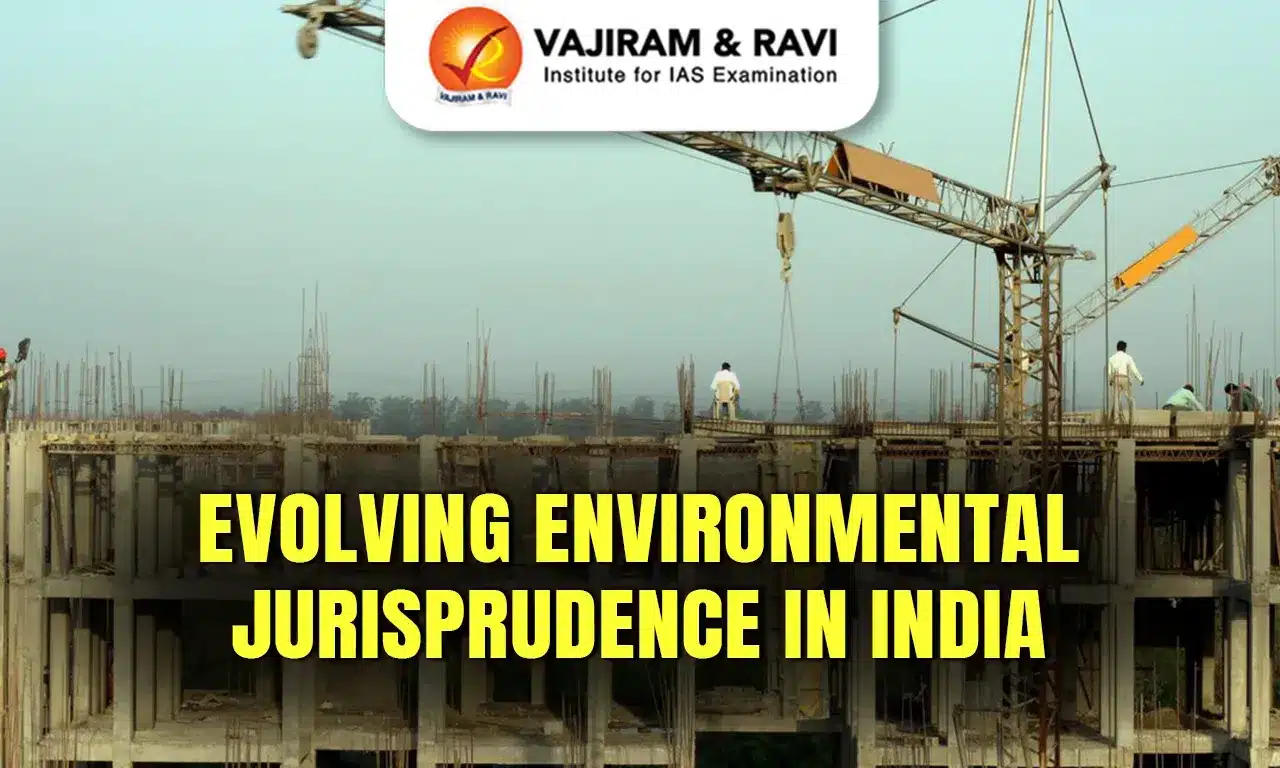What’s in Today’s Article?
- Evolving Environmental Jurisprudence in India Latest News
- Key Highlights of the Supreme Court Judgment
- Constitutional and Legal Framework
- Violation and Institutional Lapses
- Implications of the Verdict
- Conclusion
- Evolving Environmental Jurisprudence in India FAQs
Evolving Environmental Jurisprudence in India Latest News
- In a significant ruling aimed at strengthening environmental governance in India, the Supreme Court declared illegal the Ministry of Environment’s 2017 notification and 2021 Office Memorandum (OM).
- They allowed ex-post facto/ retrospective environmental clearance (EC) for projects that commenced without prior approval.
- The judgment reinforces the Environment Impact Assessment (EIA) Notification, 2006, and upholds the constitutional right to a pollution-free environment under Article 21.
Key Highlights of the Supreme Court Judgment
- Striking down of 2017 notification and 2021 OM:
- The 2017 notification granted a six-month amnesty for projects operating without prior EC.
- The 2021 OM introduced a Standard Operating Procedure (SOP) for dealing with violation cases.
- The Court ruled that both instruments are illegal, as they seek to regularize violations of the EIA Notification, 2006.
- Prior EC is mandatory:
- Reiterating past precedents like Common Cause v. Union of India (2017) and Alembic Pharmaceuticals v. Rohit Prajapati (2020), the Court emphasized that prior EC is non-negotiable under environmental law.
- Projects starting without it are in gross violation of the law and harm societal and ecological interests.
- No more ex-post facto EC:
- The judgment bans any future circulars or memoranda granting retrospective environmental clearance.
- SC warned that courts must take strict action against violators to deter environmental degradation.
Constitutional and Legal Framework
- Fundamental rights and duties:
- Article 21 guarantees the right to life in a pollution-free environment.
- Article 51A(g) outlines the fundamental duty of every citizen to protect and improve the environment.
- Legal framework: The Environment (Protection) Act, 1986 is designed to enforce these rights and duties.
- Role of courts:
- The Supreme Court affirmed that it is the duty of constitutional courts to protect the environmental rights of citizens.
- This was also reiterated by the court in –
- The M.C. Mehta case (lays down the concept of ‘absolute liability’),
- The Godavarman Thirumulpad case (redefined the concept of ‘forests’) and
- The recent (2024) case where SC ruled that citizens have a “right against the adverse effects of climate change”.
- This means development cannot come at the cost of the environment.
Violation and Institutional Lapses
- Widespread abuse of the 2017 and 2021 policies:
- Over 100 projects were granted ECs under the “violation category” including:
- Coal (benefitted Mahanadi Coalfields Limited, etc), iron, bauxite mines
- Cement plants (Jaypee Cement, etc), distilleries
- Steel and iron factories
- Major hospitals, hotels (Hotel Leela Venture Ltd, etc), real estate projects
- Over 100 projects were granted ECs under the “violation category” including:
- At least 150 other projects were issued Terms of Reference (ToR) for environmental impact assessments.
- Institutional lapses:
- The Expert Appraisal Committee (EAC) met 46 times between 2017–2021 to process these violation cases.
- The Ministry argued ex-post EC was in line with the polluter pays principle, but the Court rejected this reasoning.
Implications of the Verdict
- Existing clearances not affected: Environmental clearances already granted under the now-invalidated instruments will remain valid.
- Closure of loopholes: The “ex-post facto” route is now permanently closed, aligning with global best practices in environmental protection.
- Strengthening environmental governance: This decision reaffirms that legal compliance is non-negotiable, and industries cannot operate outside regulatory frameworks.
Conclusion
- The Supreme Court’s verdict sends a clear message – development must not come at the cost of environmental integrity.
- Upholding the principle of prior clearance, it reiterates the importance of accountability in the use of natural resources.
- As environmental degradation worsens, particularly in urban centers like Delhi, such rulings will be critical in ensuring that economic growth remains sustainable and legally compliant.
Evolving Environmental Jurisprudence in India FAQs
Q1. What was the key issue addressed by the Supreme Court in its 2025 judgment related to environmental clearance?
Ans. The Supreme Court struck down the 2017 notification and 2021 Office Memorandum that allowed ex-post facto environmental clearance, terming them illegal and against the EIA Notification 2006.
Q2. How does the judgment reinforce Article 21 of the Indian Constitution?
Ans. The Court upheld that the right to live in a pollution-free environment is part of the right to life under Article 21, and retrospective clearances violate this fundamental right.
Q3. Why did the Supreme Court find the 2021 Office Memorandum (OM) problematic in the context of environmental governance?
Ans. The 2021 OM attempted to regularize long-standing violations of EIA norms, even after 15 years of its implementation, undermining environmental accountability.
Q4. What principle of environmental law was central to the Court’s reasoning in rejecting ex-post facto ECs?
Ans. The judgment emphasized the precautionary principle and the requirement of prior clearance, asserting that ex-post facto approvals contradict environmental jurisprudence.
Q5. What are the broader implications of this ruling for environmental impact assessment in India?
Ans. The ruling closes the door on retrospective approvals, strengthens the legal mandate for prior EC, and upholds judicial vigilance in environmental protection.
Last updated on June, 2025
→ UPSC Notification 2025 was released on 22nd January 2025.
→ UPSC Prelims Result 2025 is out now for the CSE held on 25 May 2025.
→ UPSC Prelims Question Paper 2025 and Unofficial Prelims Answer Key 2025 are available now.
→ UPSC Calendar 2026 is released on 15th May, 2025.
→ The UPSC Vacancy 2025 were released 1129, out of which 979 were for UPSC CSE and remaining 150 are for UPSC IFoS.
→ UPSC Mains 2025 will be conducted on 22nd August 2025.
→ UPSC Prelims 2026 will be conducted on 24th May, 2026 & UPSC Mains 2026 will be conducted on 21st August 2026.
→ The UPSC Selection Process is of 3 stages-Prelims, Mains and Interview.
→ UPSC Result 2024 is released with latest UPSC Marksheet 2024. Check Now!
→ UPSC Toppers List 2024 is released now. Shakti Dubey is UPSC AIR 1 2024 Topper.
→ Also check Best IAS Coaching in Delhi
























